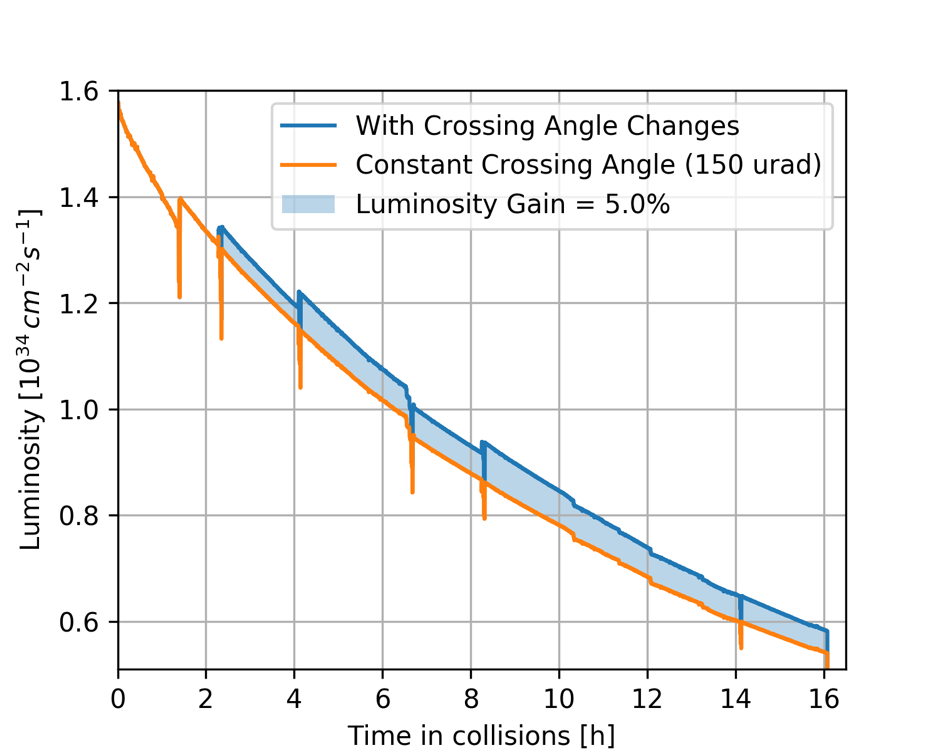Since the last year-end technical stop, during machine fills and while the beams are in collisions, the crossing angles at which the beams collide in the middle of ATLAS and CMS have been routinely reduced. Reducing the crossing angle over the course of a fill allows the recovery of some of the total potential luminosity that gets lost as the beams do not collide head-on, but they need to be collided at an angle of a couple of hundred microradians. The principle of this progressive angle reduction process was demonstrated in September last year, during a Machine Development period. It was then automated during the 2016 end-of-year shutdown to be routinely used in LHC operation. After successful validation during the 2017 re-commissioning period, it has been used in every LHC physics production fill ever since.
Why must the two beams be put in collision at an angle and why do we want to reduce this angle? When the two LHC beams approach each other around each of the four LHC interaction regions, encounters must be prevented in the region where the two beams share the same vacuum chamber. The solution to that problem is therefore to collide the beams at an angle of a couple of hundred microradians. But even when colliding the beams at an angle, the bunches still interact at a distance through electromagnetic fields. The angle therefore has to be large enough to provide a separation that reduces these long-range interactions between the beams to an acceptable level. However, a large crossing angle decreases the luminosity, as it reduces the overlap area of the bunches. This geometric reduction factor depends on the crossing angle as well as on the transverse beam size and the bunch length. With the present LHC beam parameters, ATLAS and CMS lose around 35% of the theoretical peak luminosity due to the crossing angle.
LHC scientists have found a way to mitigate this effect: since the beams lose intensity in collisions, and the long-range interactions thus decrease, this allows a reduction in the crossing angles. For the last few months of LHC proton physics operation in 2017, the crossing angles of the beams have been routinely reduced while the beams were in collisions. At present, the half crossing angle at ATLAS and CMS is 150 microradians at the start of collisions, and it is reduced by 10 microradians every few hours down to a minimum of 120 microradians. This increases the total integrated luminosity yield per LHC fill by up to 5%.
Decreasing the crossing angle in the LHC, with high-intensity beams colliding and all experiments recording data, is not as simple as turning a knob or pushing a button. The protection of the machine and the experiments needs to be ensured at all times, and multiple accelerator systems need to be orchestrated for a smooth transition, including the steering magnets, the orbit feedback system and the collimators around the affected interaction points.
The LHC has just undergone a three-day technical stop. Every technical stop is followed by a short revalidation of machine operation, which includes an intensity ramp up, typically over three to four machine fills. This time the LHC crews are taking advantage of that ramp up to further squeeze the beam size at the ATLAS and CMS interaction points through a reduction of the β* parameter from 40 cm to 30 cm. This change is expected to yield a 10% increase in the integrated luminosity for the remainder of the 2017 run.


